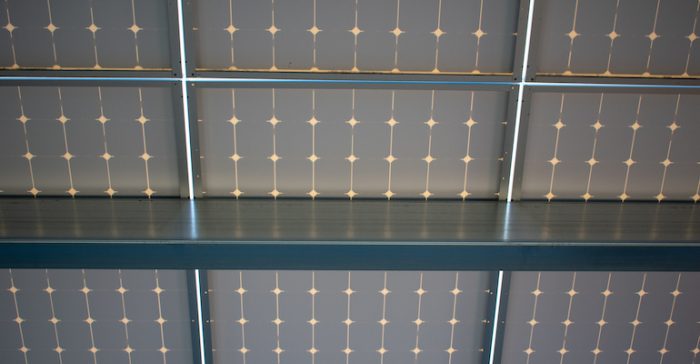The influences driving solar carports
pv magazine, March 15, 2019
Our man Charles Thurston hosted a solar carport Q&A with Borrego Solar as part of his research into the topic for this month’s edition of pv magazine.
Here are a few extra insights that came in after the presses rolled.
Trevor Dawson, an industrial engineer asks: What factors are driving the growth of solar carports?
Borrego: I think solar carports are growing for a variety of reasons – public buy-in for solar is huge these days and I believe that confidence and the current political climate has many communities and businesses stepping up and becoming renewable energy leaders and climate activists themselves, to show off their long term, forward looking commitment to sustainability and a healthy population.
Carports are an easy option for many in urban and suburban areas as it puts their otherwise cost-sink parking lot or garage to work! Carports make economical sense and they are also huge statement pieces for the community – a rare branding or marketing opportunity with an attractive return on investment. A school, for example, can point to the carport and explain how it is investing in the long term for the school, students and community at large. That school becomes a point of pride in the community and a place parents want to send their kids.
Carports also create more value for the parking lot users, which our customers are interested in – the moment users arrive they have a better experience because of the improved safety and security from better LED lighting and protection from the brutal Californian sun or winter rains, the carports are also an aesthetic appeal to an otherwise uninteresting, boring, flat parking lot.
What is the economic argument supporting solar carports as a) retrofits; and b) new structures?
Both work. I don’t have a good grip on dollars but we get a lot of parking garage opportunities, new parking lots that were previously brownfields or just simply new structures added to pre-existing parking lots.
Are single or double-axis trackers a viable option for the carport market, and why?
Not yet, [it is an] interesting idea but I haven’t seen much precedence here – I’d be concerned about the O&M [operations and maintenance] cost, and also the image of large moving motors and tons of weight above humans seems like a more challenging sell. There has been movement towards bi-facial modules that could add 25% [energy] production [output].
What new designs or changes have you made in your offerings or business lately?
Snowy region carports are picking up steam – these are great because they keep cars warmer [and] cleaner and provide [a] safer and less icy approach for parking lot patrons. We almost built a carport out of wood for our [organic food] Clif Bar customer, as [it] wanted a solution more in tune with the environment and [its] wood-chip parking lot. I could see more jobs like this getting popular – BMW has made a few small scale carports like this – if we can develop a design at scale that is structurally sound and more environmentally conscious. That’s the point, right!
We recently moved from a tube steel structure to an i-beam or wide flange design – it’s nothing fancy but a more minimalist, industrial vibe which I think is a more timeless aesthetic and requires less drilling and penetration into the parking lot, which is always preferred.
Billy Christie, a regional engineering manager on the West Coast, said: “I believe the ubiquity of suitable locations for – as well as the high visibility of – commercial solar carports in relatively urban areas is one slightly more abstract reason for the growth of this subsection of solar PV.
“Carports do a good job of serving potential solar customers that lack the higher acreage required for ground mount systems as well as the large, clear roof space required for roof mounted systems. These ideal carport customers tend to share a common bond of having need for high capacity parking and large electrical demand – think airports, sports stadia, schools – and are almost always located near population centers due to the nature of their business. Because these are the ideal customers for solar carports, the structures are much more visible during most people’s day-to-day lives than commercial ground mount systems, which are more common in rural, less populated areas; and commercial rooftop systems, which are generally out of sight on top of flat-roofed buildings.
“I believe the common presence [of] carports has had an accelerating effect on growth by introducing potential future customers to the product during their everyday lives.”
Billy Christie, Borrego Solar Regional Engineering Manager
